Women at the National Gallery – new jobs for women
Up until 1913, the Housemaids were the only women working in the Gallery. The early part of the 20th century saw the creation of more jobs for women in what was a very male-dominated workplace.
Typists
During a board meeting on 28th January 1913, Hawes Harrison Turner, the Gallery’s secretary, explained that a note on the Layard bequest had not been circulated to the Trustees because of a lack of assistance. All communications were still handwritten at this time, despite reliance on the typewriter elsewhere. By the end of the meeting, the immediate employment of a female typist had been sanctioned.
Mary J Ruse joined the Gallery staff on 17th March 1913. She was 29 and, rather shockingly, the Civil Service Commission suggested that her continued employment should be subject to the treatment of defective teeth.
Typed correspondence appears in the archive from May 1913 and by the end of 1914 almost all documents are typed. We know that Mary also takes on the responsibility for indexing and filing. Clearly, she was an integral member of the staff. The Director, Charles Holmes even mentions her in his 1936 autobiography:
"Lord Curzon, who came one day to the gallery to dictate a reply. Presently he embarked upon a paragraph of some complexity. Our gentle, willing typist, pausing in her shorthand, looked up at him, pink and doubtful. Lord Curzon repeated his period. Miss Ruse listened, blushed scarlet and finally ejaculated, ‘Please, Lord Curzon it isn’t grammar.’ I hastened to explain that it was a dependent sentence and quite correct, while Lord Curzon sat back and rocked with laughter."
The Publications department
The Publications department was established in 1915, creating several new opportunities for women. This was the Gallery’s first specialised department, and it was run by the Trustees as an almost independent publishing company.
Inspired by a similar scheme already in operation at the British Museum, two saleswomen were employed to take charge of a stall selling postcards, prints and illustrated catalogues. This proved a great success, and they were soon earning commission on their sales. The Trustees were keen to retain these women and can be seen consistently arguing for an increase in their salaries. In 1922 when asked to consider replacing them with disabled ex-servicemen, the trustees vigorously defended their position, eventually agreeing to consider the prospect only if a vacancy became available. It was some time before one did and the question seems to have been quietly dropped.
As a result of the profits produced from the sales, the Publications department was able to bring the photography of the collection in-house in 1919. A photographer, Mr Booker, assistant photographer, Harold Isherwood Kay, and a photographic printer, Miss Stearn, were all employed. At three pounds and six shillings a week, Miss Stearn was then the highest paid woman in the Gallery. In 1921, Barbara Cox, a professional photographer, was appointed to replace Isherwood Kay who had recently been promoted. Three men had initially been trialled for this position, but none had impressed Mr Booker. Some years later, in 1936, the Publications department would continue to pave the way for women in the Gallery by being the first department to appoint a female head of department.




